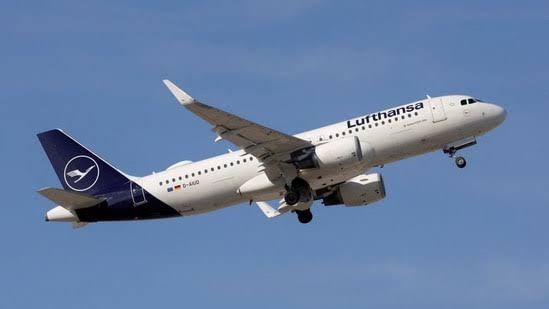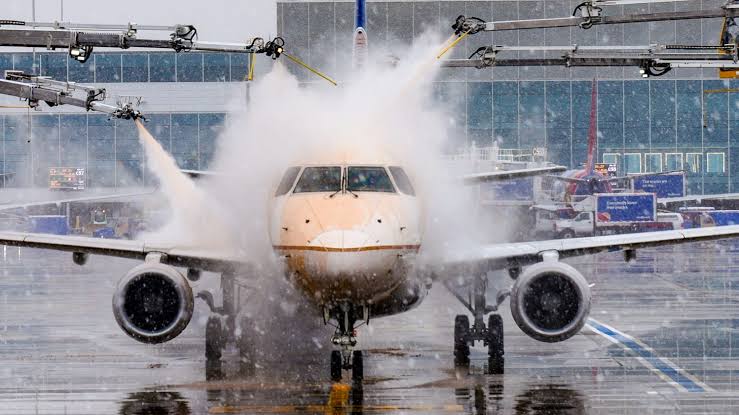Lufthansa Flight Suffers Hydraulic Failure Mid-Air.
Lufthansa Flight Suffers Hydraulic Failure Mid-Air
A Lufthansa flight en route from Frankfurt to Madrid experienced a mid-air hydraulic system failure, prompting an emergency diversion and emergency landing procedures. The dramatic in-flight malfunction left passengers frightened but unharmed, thanks to the expertise and swift response of the flight crew.
The aircraft, an Airbus A320, was carrying 174 passengers and six crew members when the issue occurred at approximately 34,000 feet over southern France. The flight had departed Frankfurt Airport (FRA) at 10:15 AM local time and was scheduled to land in Madrid-Barajas Airport (MAD) just after noon.
The Incident
According to Lufthansa and aviation authorities, the flight crew noticed abnormal hydraulic pressure readings and a loss of function in one of the three onboard hydraulic systems. Hydraulic systems in modern commercial aircraft are crucial for operating flight control surfaces (like flaps, slats, and rudders), landing gear, brakes, and nose wheel steering.
Shortly after identifying the issue, the pilots contacted air traffic control and declared a PAN-PAN emergency — a standard procedure for serious but not immediately life-threatening situations.
“We received an alert from the cockpit regarding a potential failure in the Green hydraulic system,” Lufthansa stated in an official release. “As a precautionary measure, the crew elected to divert the aircraft to Lyon-Saint Exupéry Airport, where the flight landed safely.”
Passenger Reactions: Panic, Then Relief
Passengers on board described the atmosphere as tense and frightening. While the flight initially appeared smooth, the tone shifted once the cabin crew began preparing the cabin for an emergency landing.
“There was a noticeable change in engine noise, and then the captain came on and said we were having a technical issue,” said Markus Heintz, a German businessman returning from a conference. “Flight attendants moved quickly, checking seatbelts, reviewing emergency procedures, and trying to keep everyone calm.”
Another passenger, Maria Rodriguez from Spain, said she began to cry after hearing the word “emergency.” “You never expect to hear that when you’re in the sky,” she said. “But the crew were calm and professional. They reassured us it was under control.”
Safe Landing in Lyon
The flight landed safely in Lyon at 11:42 AM local time, with fire trucks and emergency vehicles lining the runway as a precaution. No injuries were reported, and passengers were able to disembark normally through mobile stairs before being transported to the terminal.
Local authorities and Lufthansa’s ground staff arranged accommodations, food, and an alternative flight for affected passengers, who were rebooked on another service to Madrid later that evening.
“I’m just thankful we’re safe,” said Rachel Tran, a tourist from Canada who was traveling with her fiancé. “It’s scary to think what might have happened, but the crew did an amazing job.”
Understanding Hydraulic Failure in Aircraft
Hydraulic systems are the lifeblood of an aircraft’s mechanical operations. Most commercial aircraft, like the Airbus A320, operate with multiple redundant hydraulic systems — typically labeled Green, Blue, and Yellow — to ensure that a failure in one system doesn’t compromise the entire aircraft.
In this case, experts believe the aircraft experienced a failure in one of the systems, but the redundancy built into the plane allowed the crew to maintain control using the remaining two systems.
“Hydraulic failures are serious but manageable, especially in aircraft like the A320 that are designed with backup systems,” said aviation safety analyst Tobias Grunwald. “The key is recognizing the problem early and taking the correct actions — which this crew did.”
The aircraft’s nose wheel steering may have been affected during the landing rollout, prompting the aircraft to be towed off the runway as a further precaution.
Investigation and Maintenance Actions
Lufthansa engineers are currently inspecting the aircraft to determine the root cause of the hydraulic failure. The airline has confirmed that the aircraft will remain grounded in Lyon until a full technical evaluation and necessary repairs are completed.
The European Union Aviation Safety Agency (EASA) has been notified and may assist in reviewing maintenance records and technical data logs from the aircraft’s onboard systems.
“At this time, it’s too early to say whether this was a mechanical defect, wear and tear, or a failure of a component such as a hydraulic pump or line,” Lufthansa’s chief of technical operations, Dr. Thomas Keller, stated. “Safety remains our top priority, and we are cooperating fully with authorities.”
Public and Industry Reactions
While no one was hurt, the incident has sparked renewed interest in aircraft maintenance and the importance of system redundancy in aviation safety. Lufthansa, known for its strong safety record, has reassured the public that incidents like these are extremely rare and manageable.
“We want to stress that our flight crews are rigorously trained for all types of emergencies, including hydraulic issues,” the airline said in a public statement. “The decision to divert was a precautionary measure, and all actions were executed according to safety protocols.”
Aviation forums and social media were filled with praise for the crew’s professionalism and quick decision-making. Many passengers took to Twitter and Facebook to express their gratitude for the safe outcome.
About Lufthansa and Aircraft Safety
Lufthansa is Germany’s flagship carrier and one of the largest airlines in Europe. The airline operates hundreds of flights daily, with an exceptional safety history and a commitment to technical excellence. Its fleet includes aircraft from Airbus, Boeing, and Embraer, all maintained to the highest international standards.
According to global aviation statistics, in-flight system failures like hydraulic issues account for a small fraction of airline incidents, and almost all are resolved safely due to strict training, monitoring, and maintenance.
“This event is a textbook example of how modern aviation systems and professional crew coordination ensure passenger safety even in abnormal situations,” said Captain Armin Holzmann, a retired Lufthansa pilot and aviation consultant.
Passengers Resume Journey
Later that evening, Lufthansa arranged for a replacement aircraft to transport passengers to Madrid. Many expressed relief but also gratitude for the professionalism of the crew and the calm way the emergency was handled.
“I will keep flying Lufthansa,” said one relieved passenger. “If anything, this made me trust them more. They proved they know how to handle a crisis.”
Conclusion
The Lufthansa flight’s mid-air hydraulic failure serves as both a reminder of the importance of aviation safety systems and a testament to the preparedness of airline crews. Thanks to early detection, proper protocol, and expert execution, what could have been a tragic event ended with a safe landing and no injuries.
As the investigation continues, passengers are safely on their way, and Lufthansa is already taking steps to ensure the issue is fully resolved.






